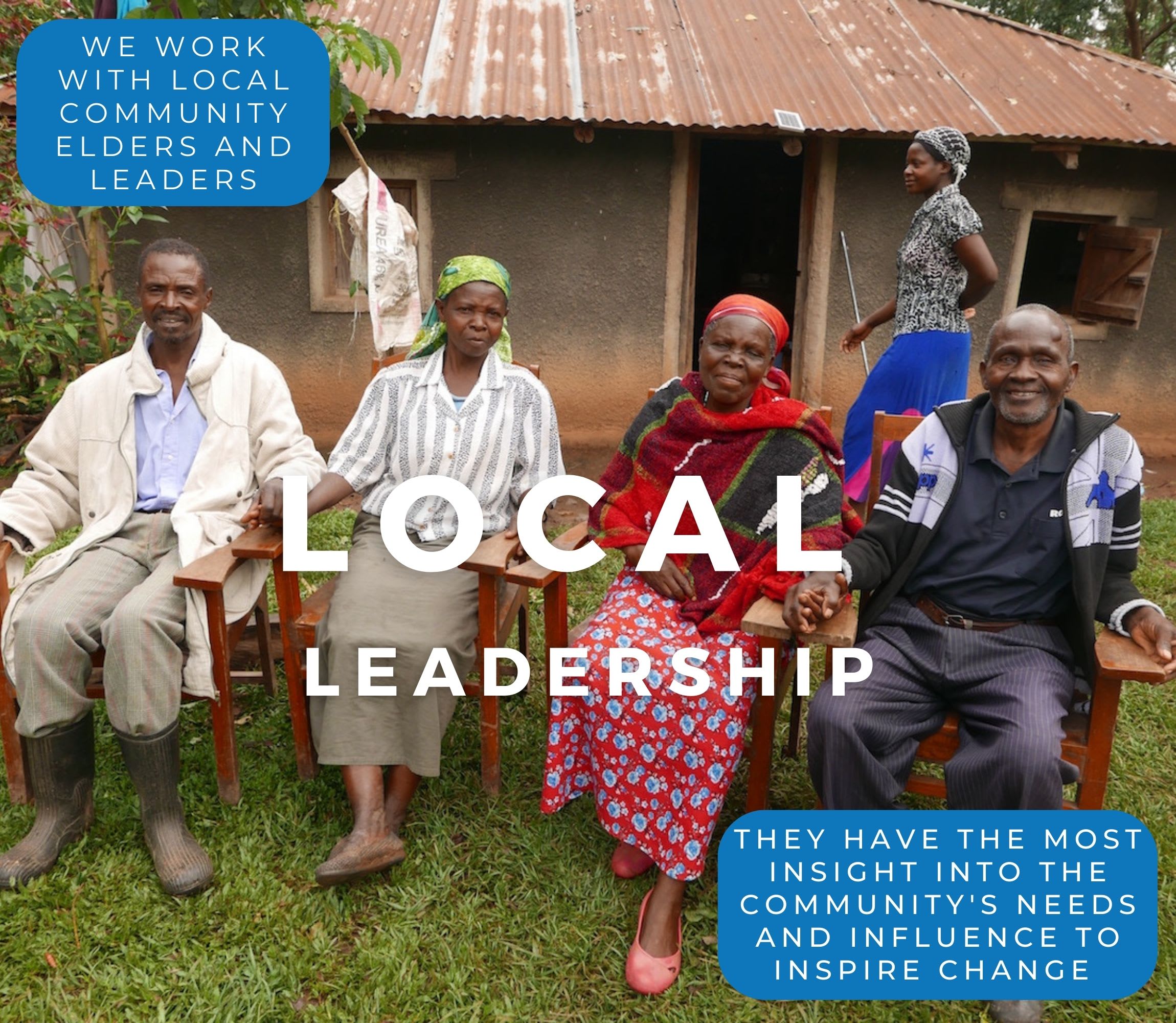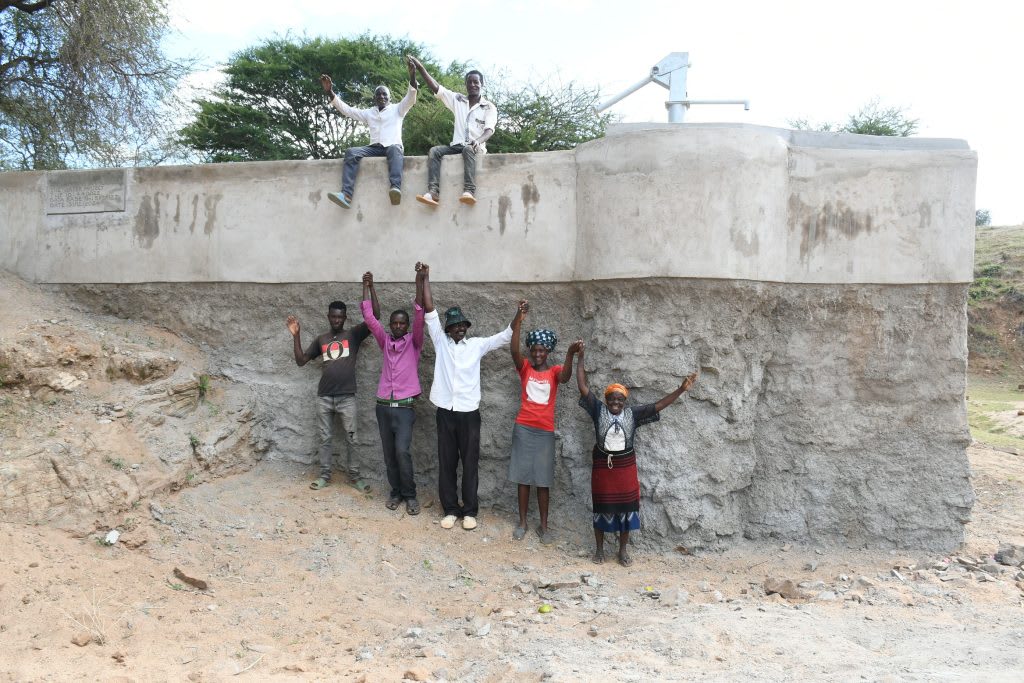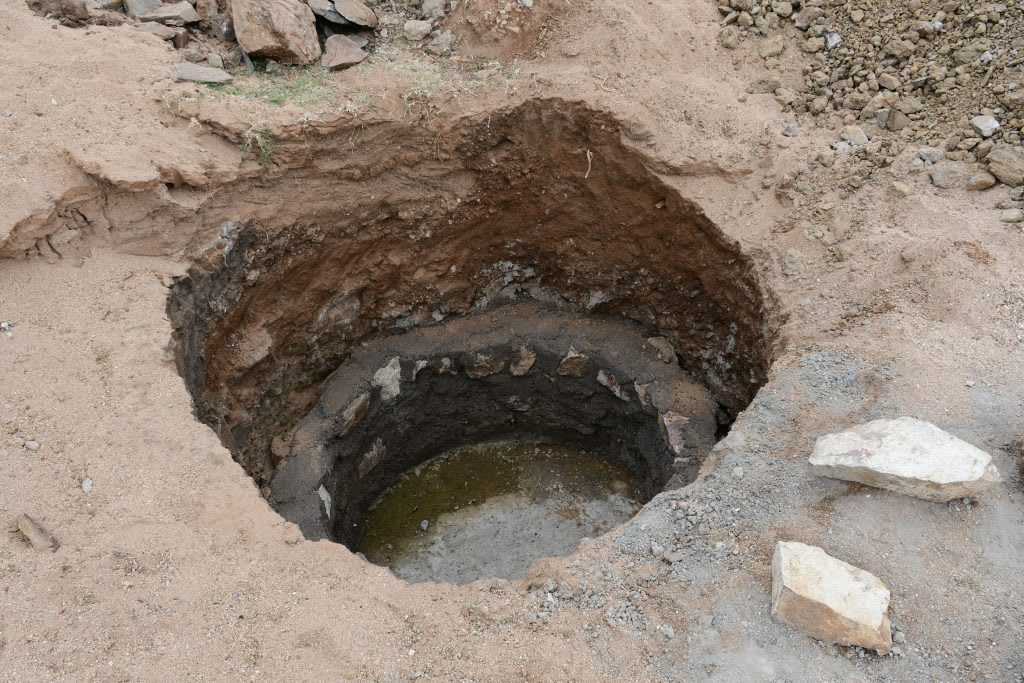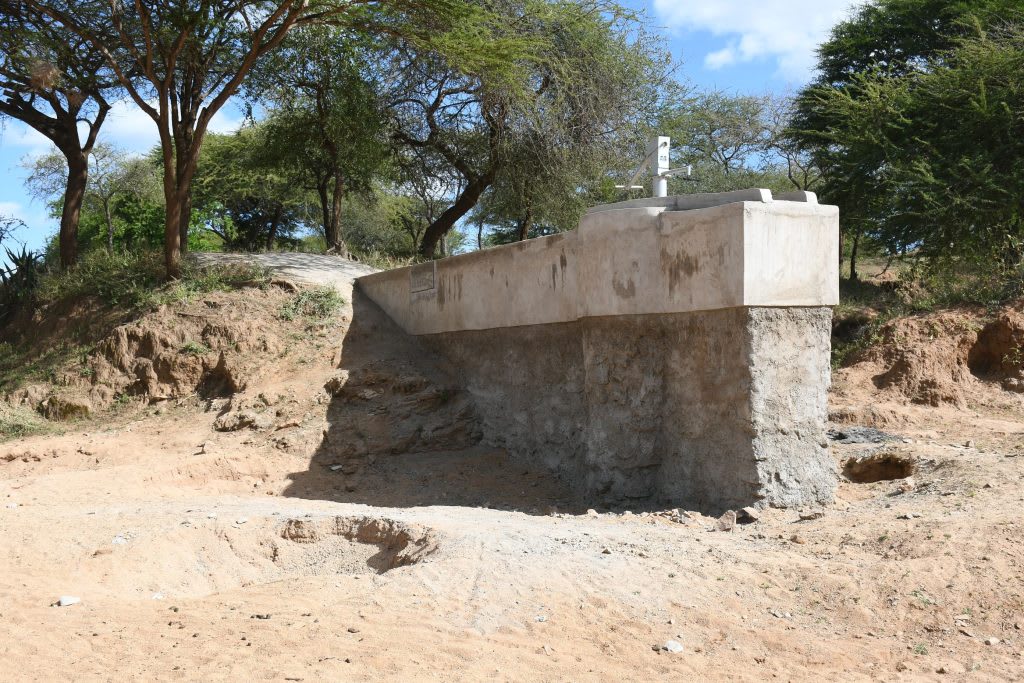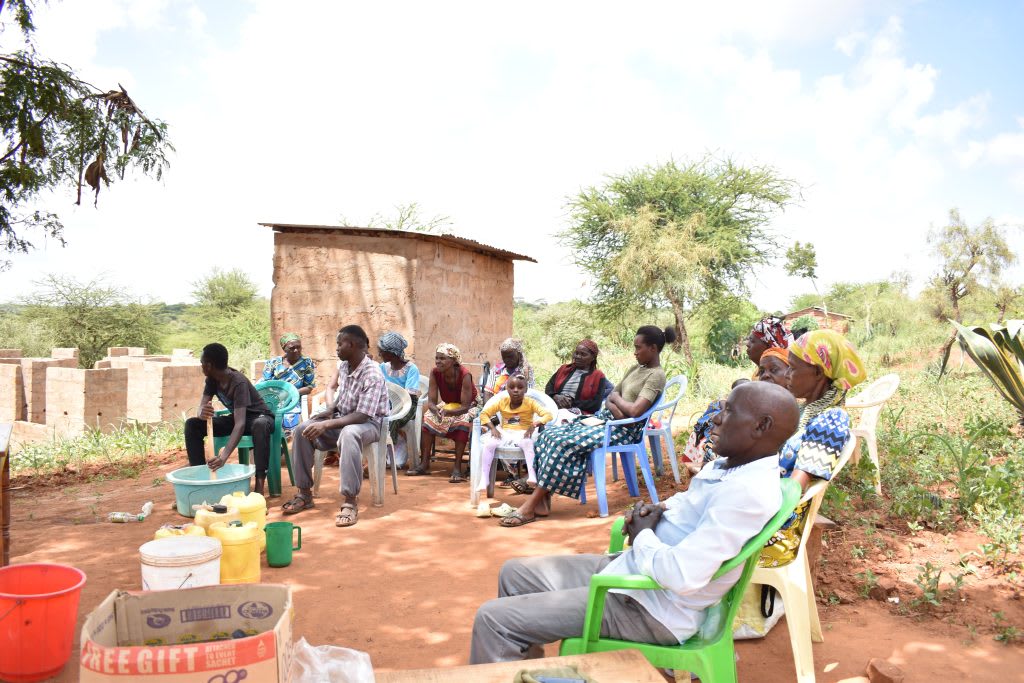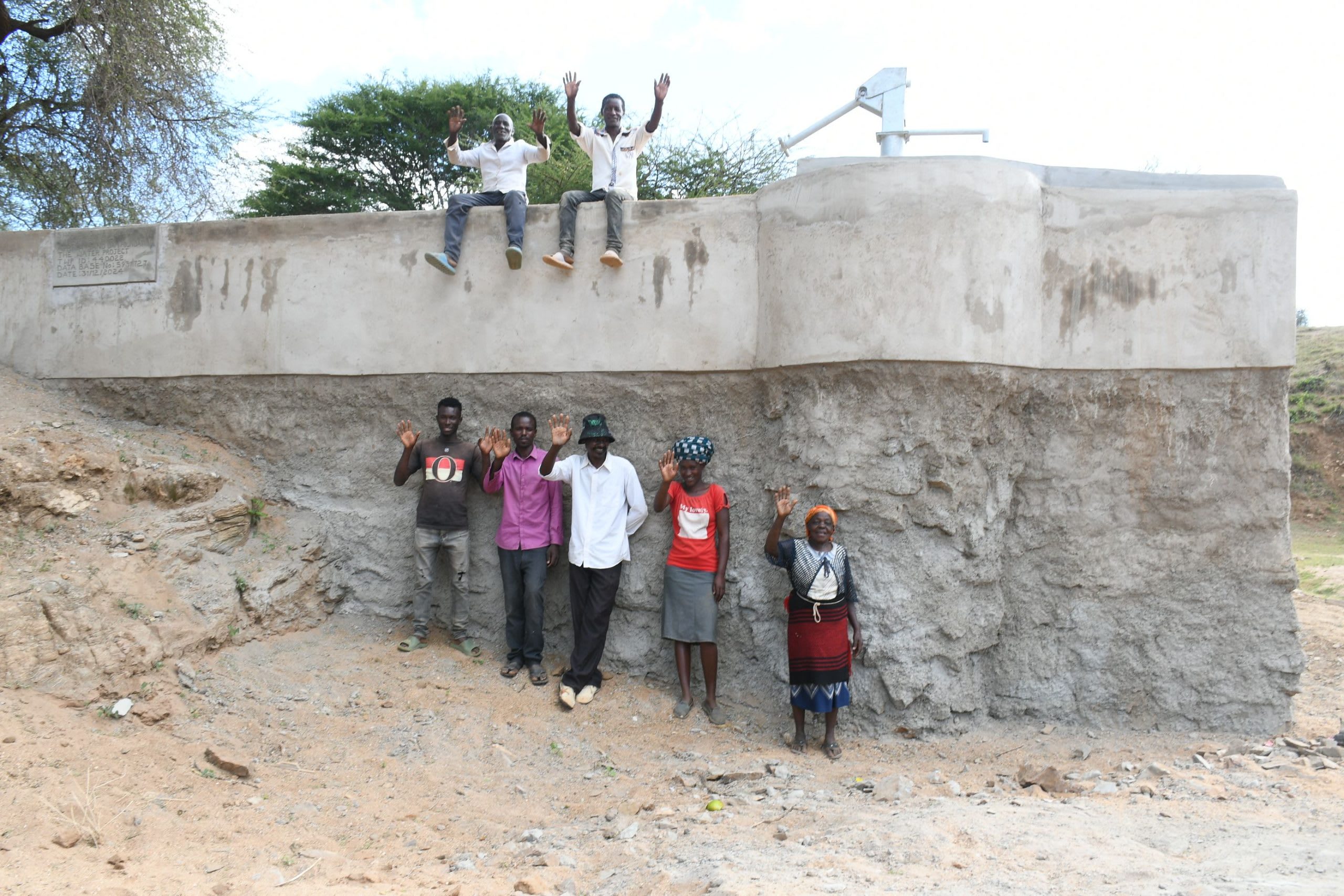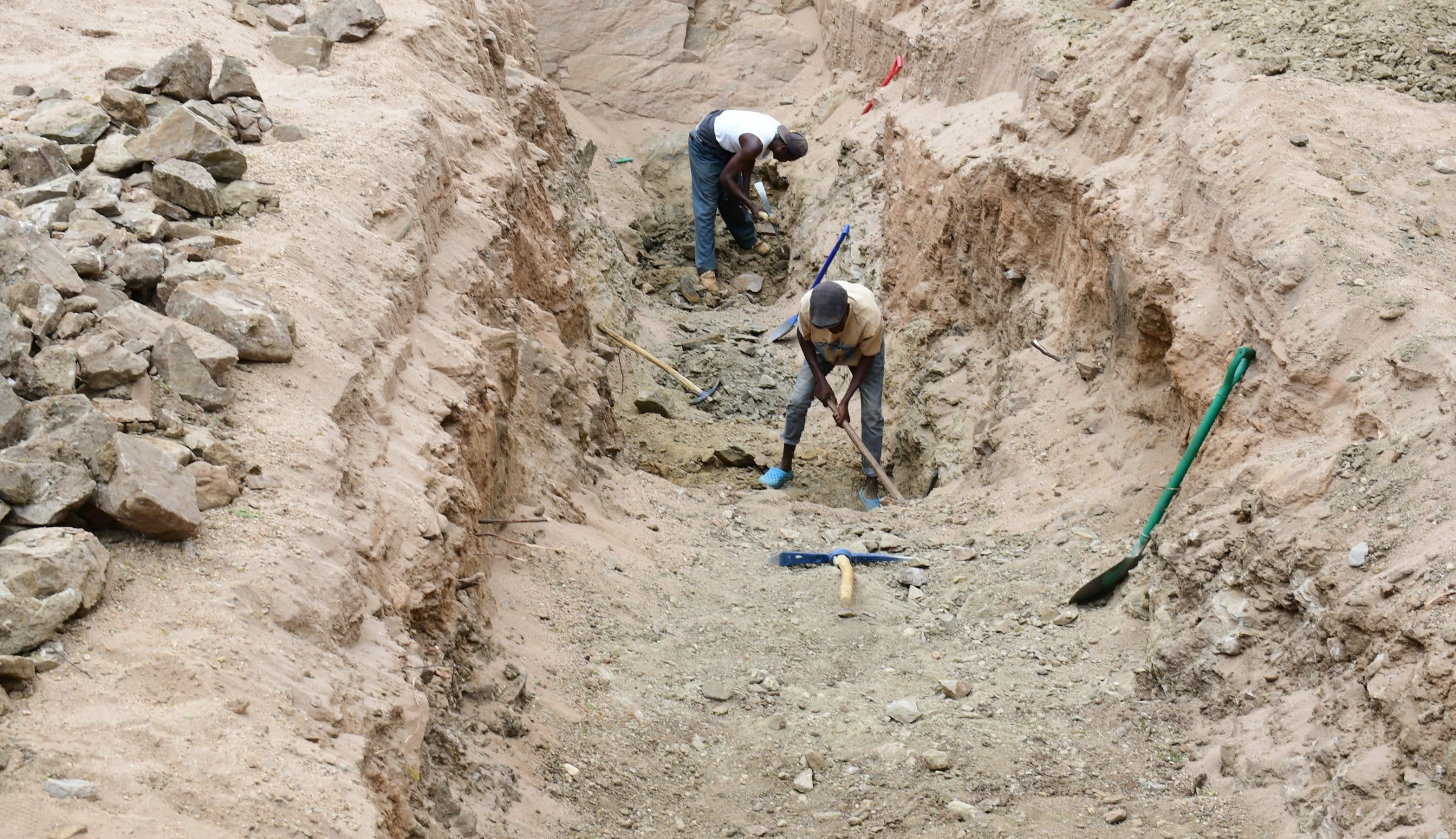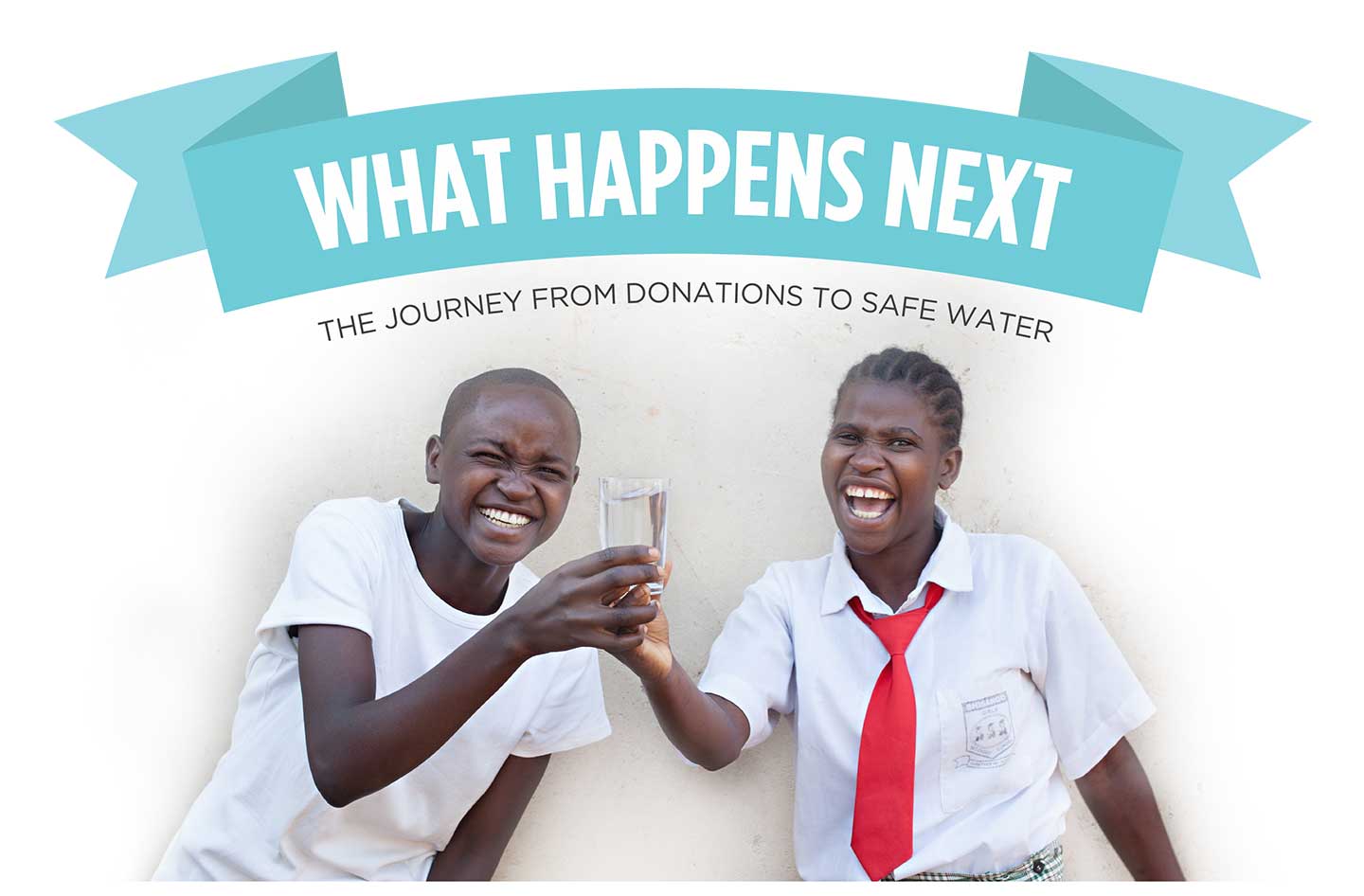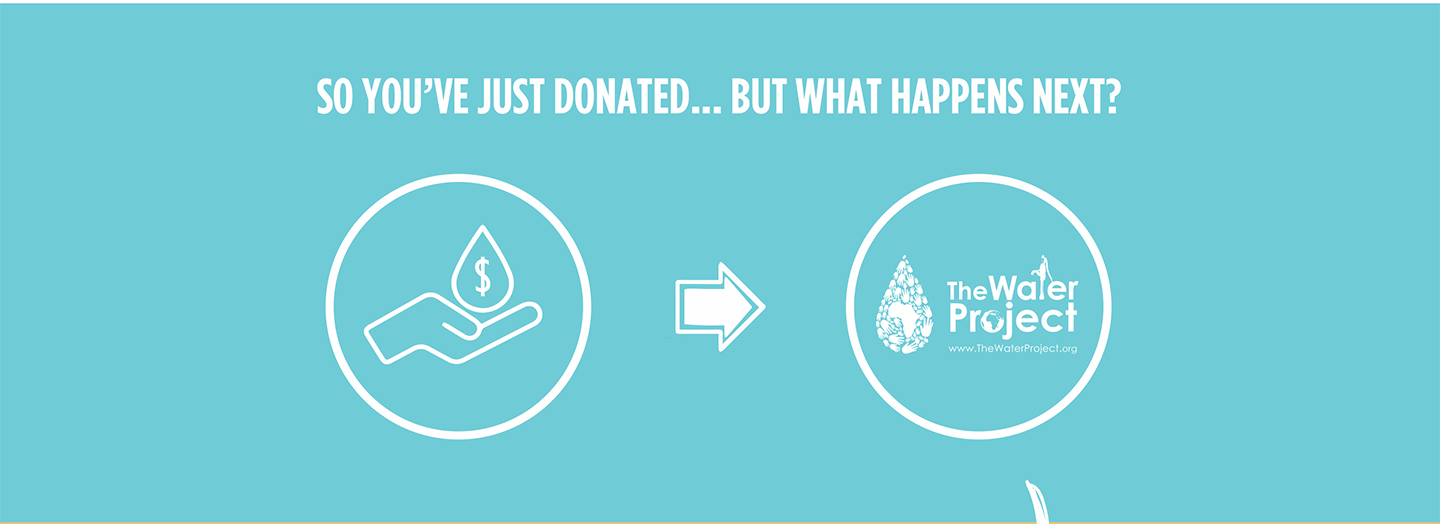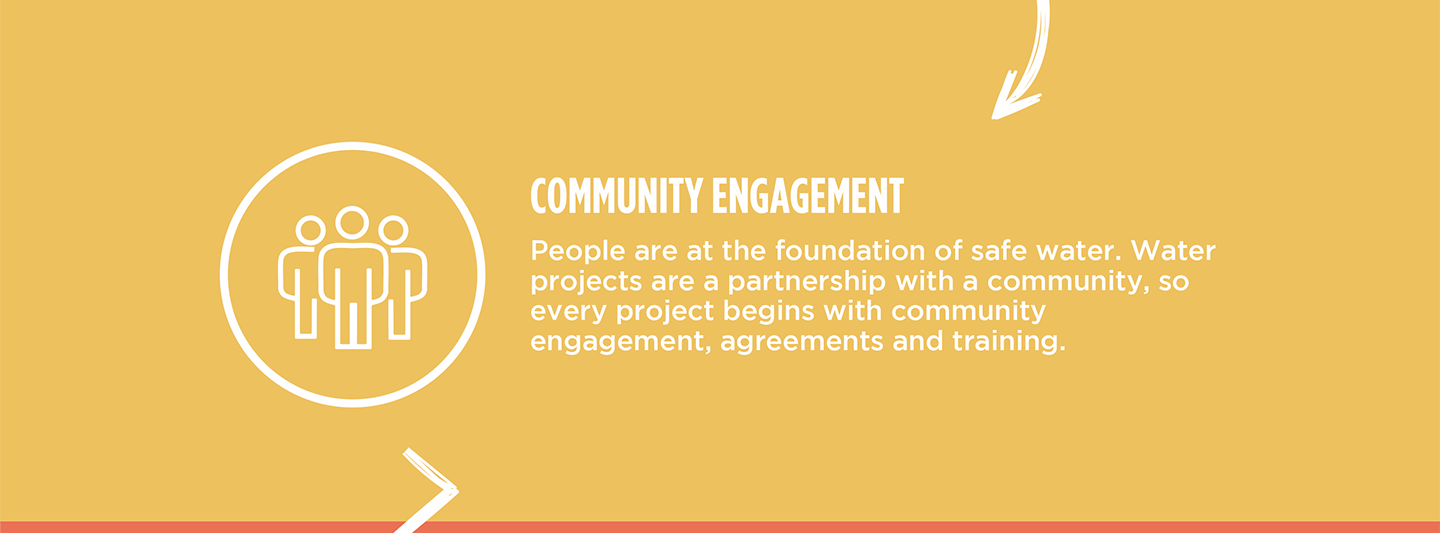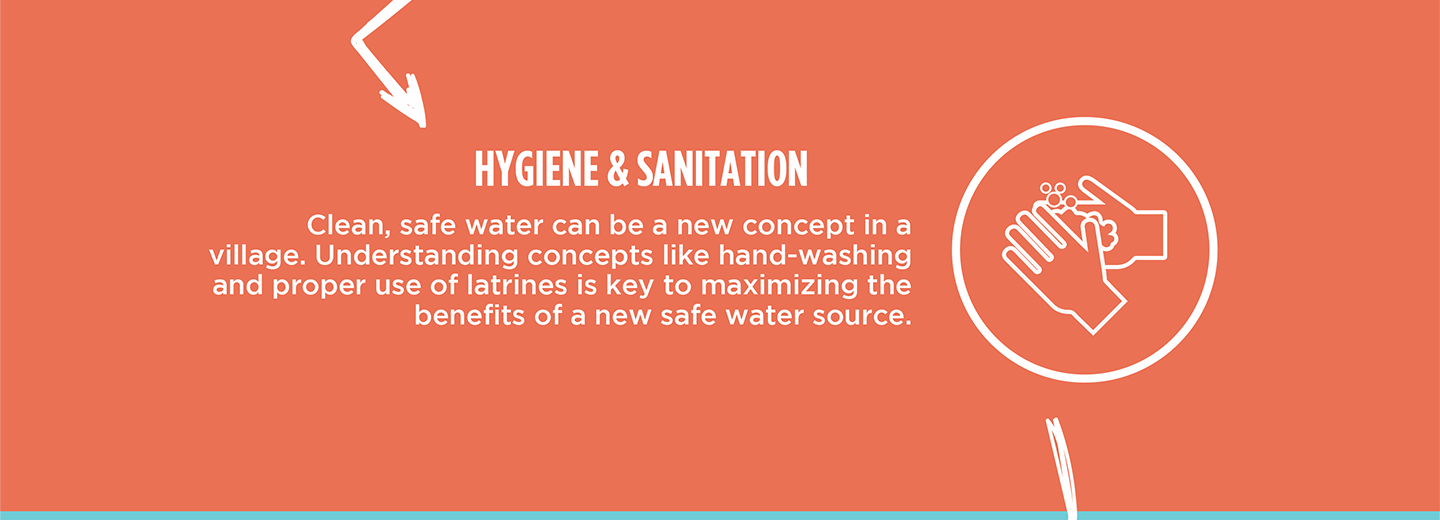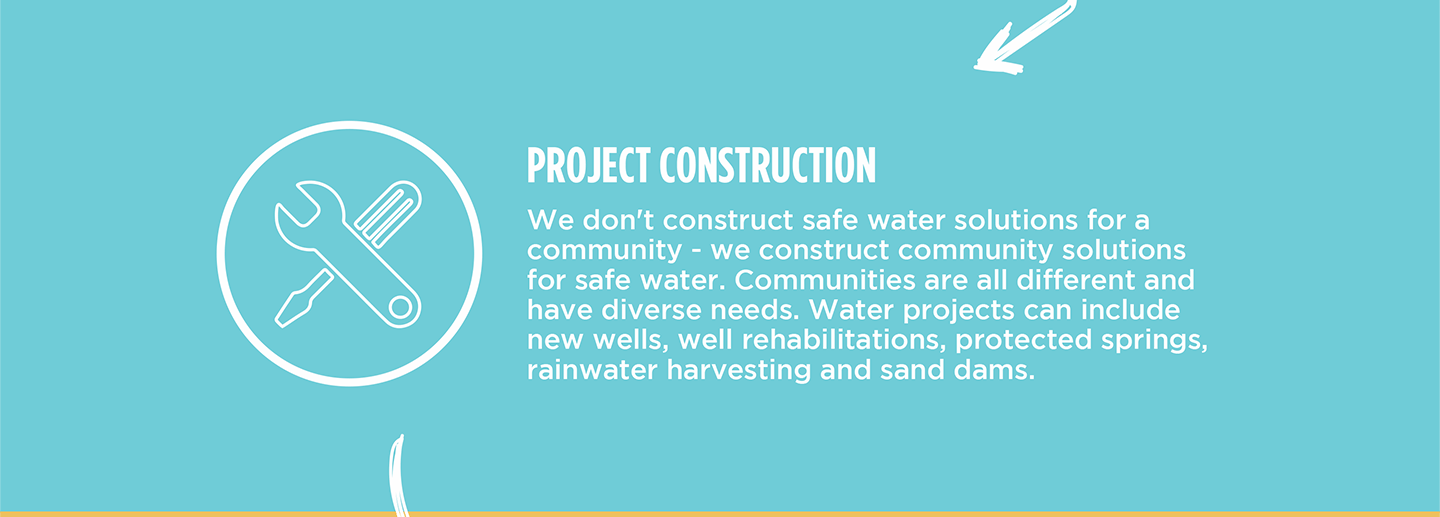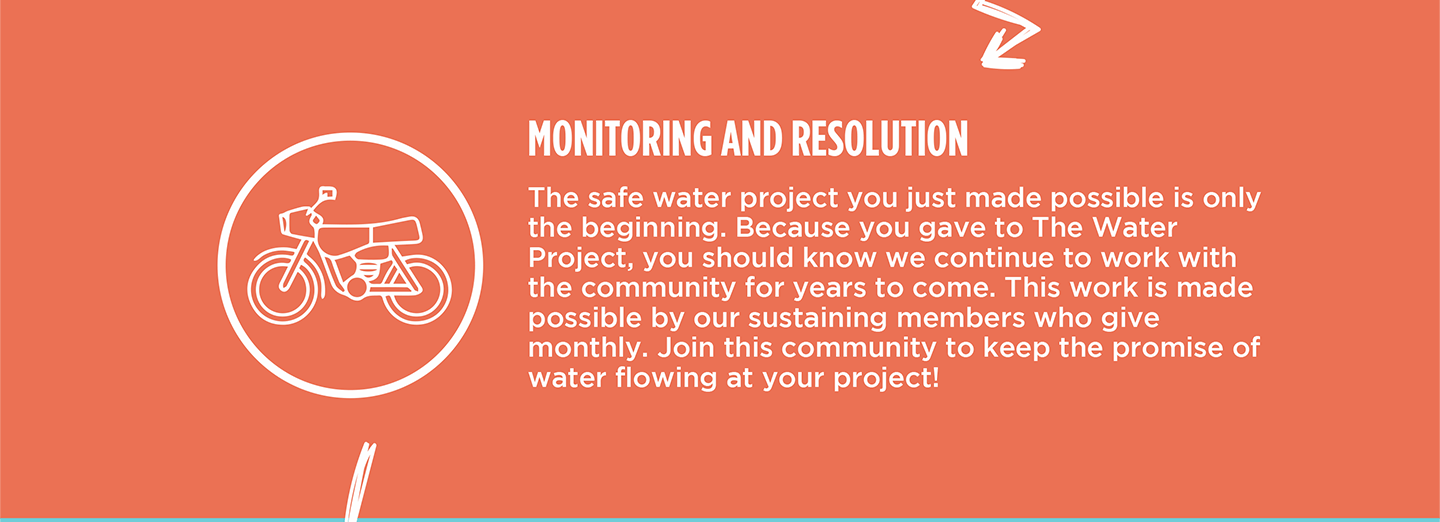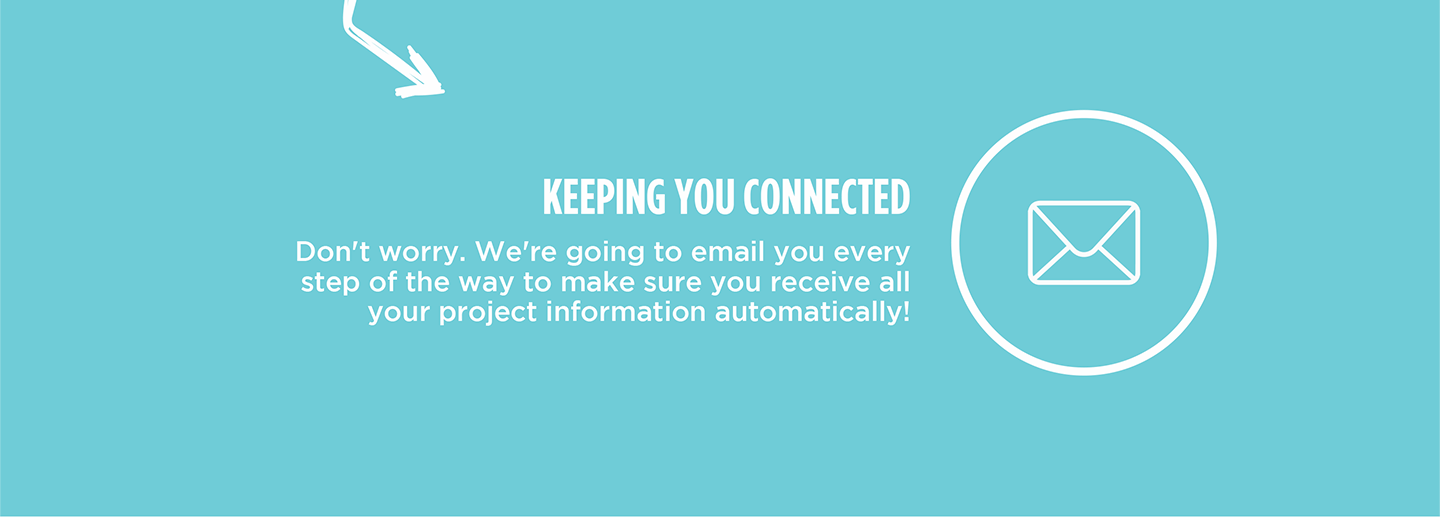The 1,500 people living in Ngutho Community face a water crisis that leaves them with little time or energy for other tasks except collecting water daily.
People have two options for water. They can walk to an open dam, a large pool of seasonal water open to contamination, or trek to an overcrowded well where they must wait in long lines that often end in insufficient water to meet the demands. Either option requires a long, exhausting journey under the hot sun.
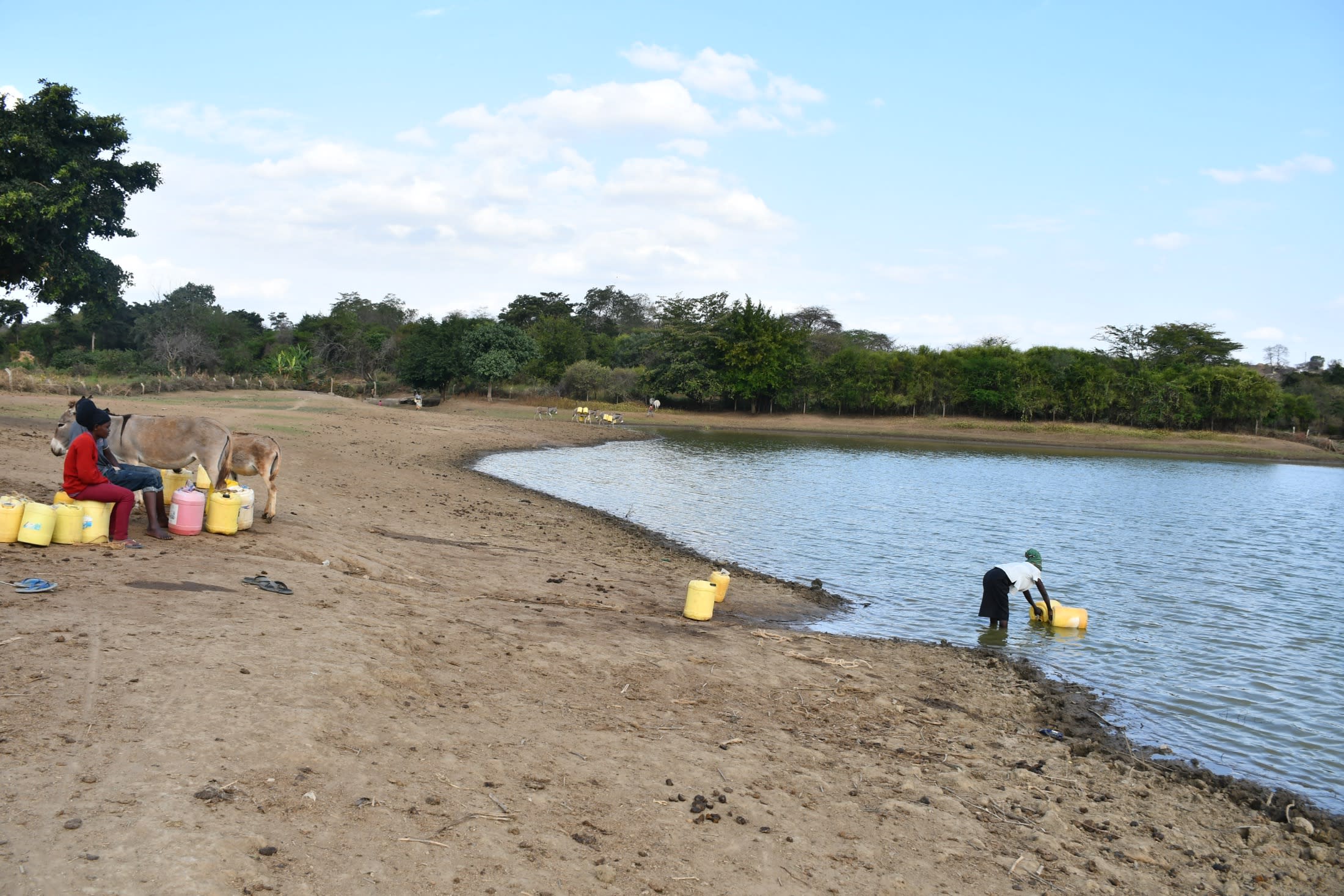
"The residents who live far away from the shallow well and earth dam are forced to walk 3 km (almost 2 miles!) to fetch water from the water points while carrying water on their backs or using donkeys if one is lucky [enough] to have one. Walking to fetch water under the scorching sun is arduous and time-consuming, leaving the residents with little energy and time to engage in activities like land preparation, rearing cattle, or improving hygiene and sanitation," shared field officer Alex Koech.
"It is very frustrating to get water from the distant Ndalani earth dam, and even my leg muscles develop pain due to the load and long journey. Waiting [in] the queue often leads to quarrels because someone usually jumps the queue. My grandchildren often remain at home with no water to drink while I go to fetch water from the surface water. Fetching water is the order of the day around here, and I come back home feeling exhausted and unable to tend to activities like cleaning the compound or nurturing my farm. Our garments are rarely cleaned because we have to use water sparingly," said 67-year-old farmer Maswii Mungai (shown below).
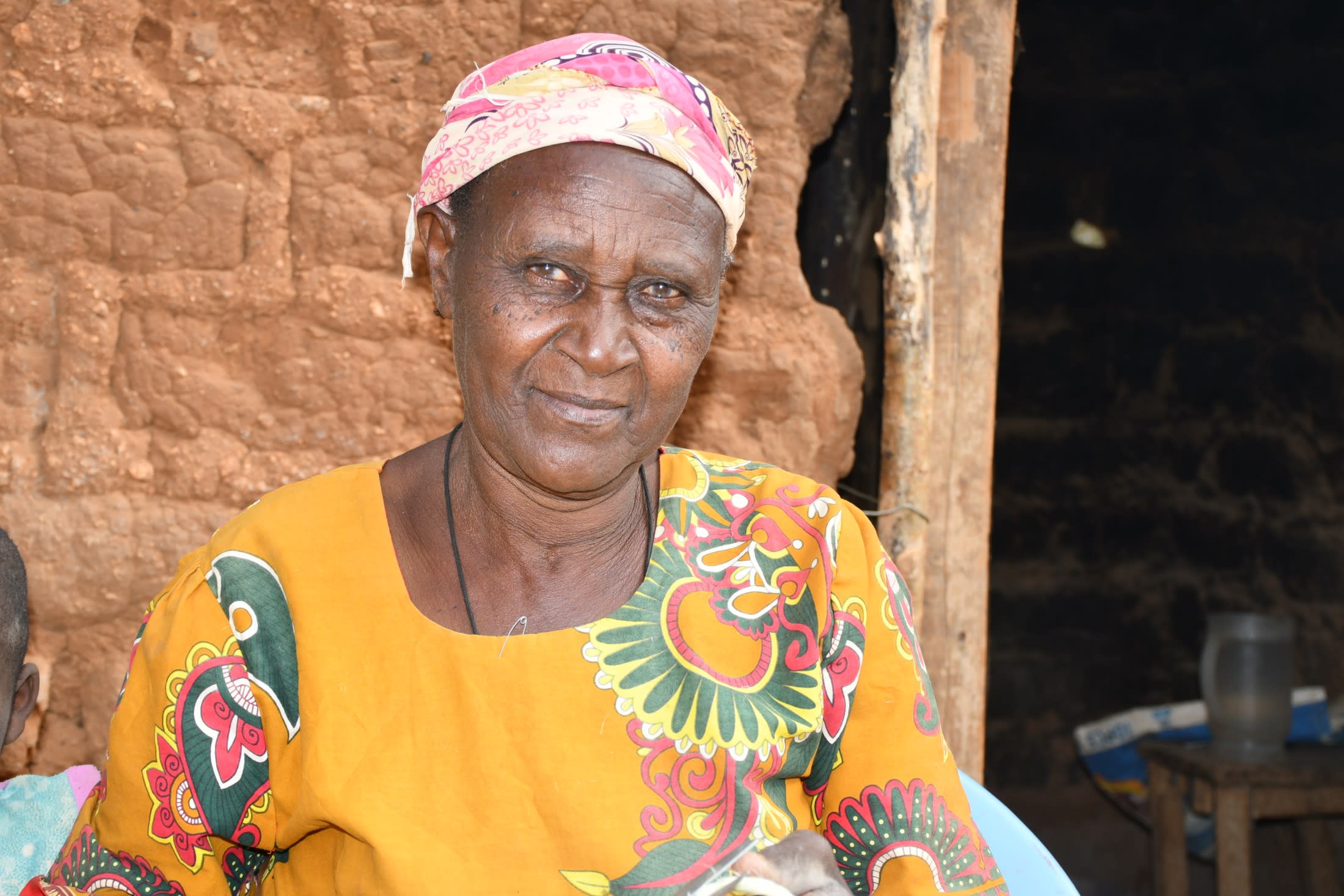
"They spend more than three hours at the water points due to the long queues and low water supply. Although the community can use the shallow well in the area, it does not offer enough water for all of them. Water can also be acquired from Ndalani earth dam [but it] offers contaminated water, making it unsuitable for drinking. Irrigating crops is impossible because the available water is either salty or insufficient, which has led to food insecurity and poor levels of income," continued Alex.
Adults are not the only ones tasked with the difficult journey. Children are often late to school and miss out on playing with friends or getting their homework done because they are burdened with collecting water, too.
"I help my mother fetch water from the borehole during weekends and holidays, which is exhausting. The long journey leaves me exhausted and unable to play with my friends or do my homework. It also feels sad when I come back from school in the evening, and there is no food to eat or water to drink because my mother is at times held up at the water point due to the long queues and low water supply. When we get a sand dam and shallow well project near my home, I will be happy because I will spend less time fetching water," said 10-year-old Sammy K. (seen below).
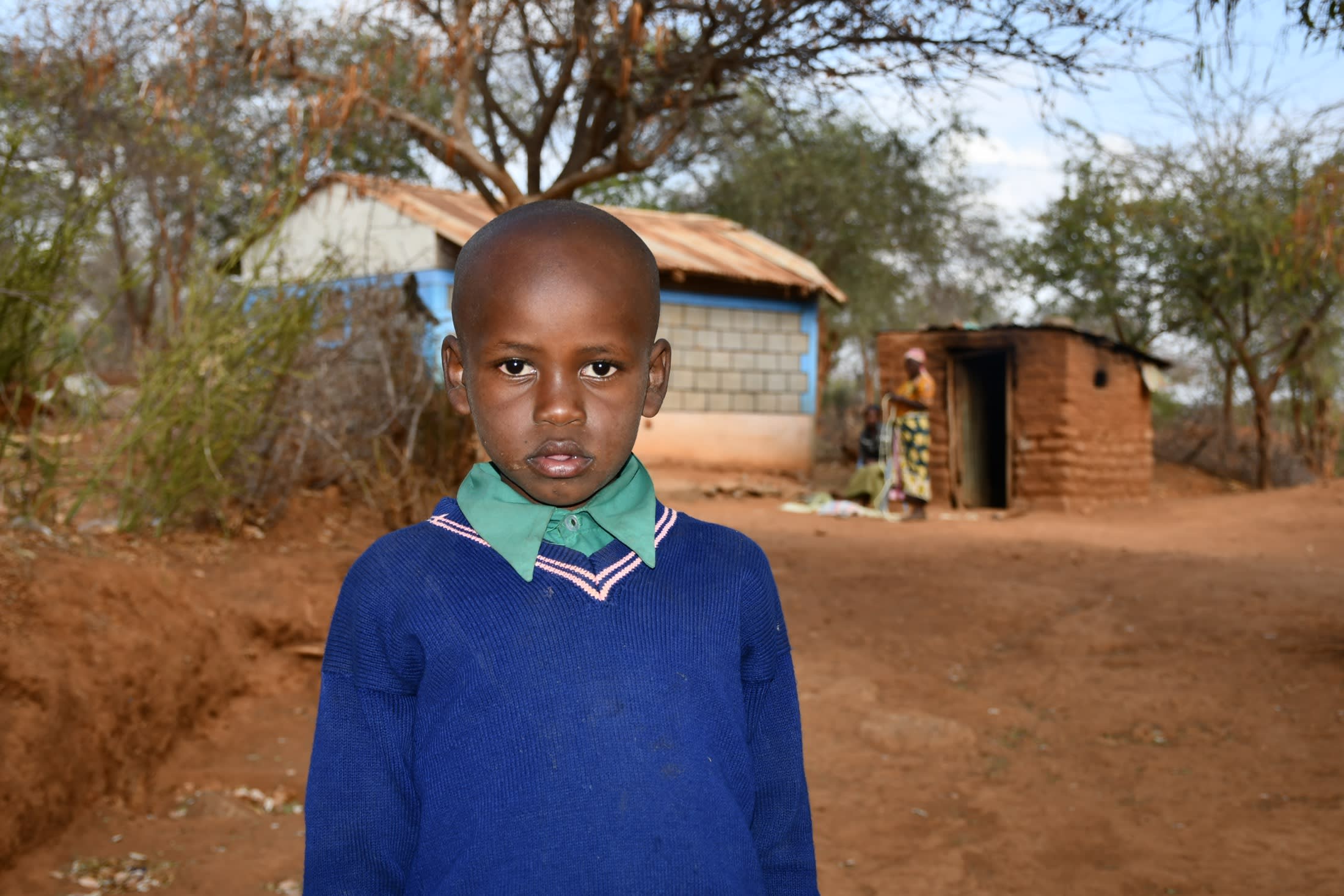
"Parents have little income to pay school fees because of the poor farm yields, hence a high number of school dropouts. The residents' health is also affected because of lack [of] enough drinking water and proper diet," Alex said.
Installing the sand dam near community members' homes will enable people to access water whenever they need it within a reasonable amount of time so they can focus on the other important tasks they need each day to make progress and improve their daily lives.
"I believe that a sand dam and shallow well project will ensure water is adequate and close to my home. This will make me very happy," concluded Maswii.
"The community members will easily access the water point because it is close to their homes and spend extra time and energy on income-generating activities like farming. They could also make more trips and get enough water to improve household hygiene and sanitation," concluded Alex.
Helping to solve the water crisis in this community will take a multi-faceted system. It requires the collaboration of the dug well and a sand dam. They will work together to create a sustainable water source that will serve this community for years to come.
Note: Our proposed water point can only serve 300 people per day. We hope to continue working with this community to identify other water solutions that will ensure all of the people in this community have access to safe and reliable drinking water.
The Proposed Solution, Determined Together...
At The Water Project, everyone has a part in conversations and solutions. We operate in transparency, believing it benefits everyone. We expect reliability from one another as well as our water solutions. Everyone involved makes this possible through hard work and dedication.
In a joint discovery process, community members determine their most advantageous water solution alongside our technical experts. Read more specifics about this solution on the What We're Building tab of this project page. Then, community members lend their support by collecting needed construction materials (sometimes for months ahead of time!), providing labor alongside our artisans, sheltering and feeding the builders, and supplying additional resources.
Water Access for Everyone
This water project is one piece in a large puzzle. In Kenya, Sierra Leone, and Uganda, we're working toward complete coverage of reliable, maintained water sources that guarantee public access now and in the future within a 30-minute round trip for each community, household, school, and health center. One day, we hope to report that this has been achieved!
Training on Health, Hygiene & More
With the community's input, we've identified topics where training will increase positive health outcomes at personal, household, and community levels. We'll coordinate with them to find the best training date. Some examples of what we train communities on are:
- Improved hygiene, health, and sanitation habits
- Safe water handling, storage & treatment
- Disease prevention and proper handwashing
- Income-generation
- Community leadership, governance, & election of a water committee
- Operation and maintenance of the water point
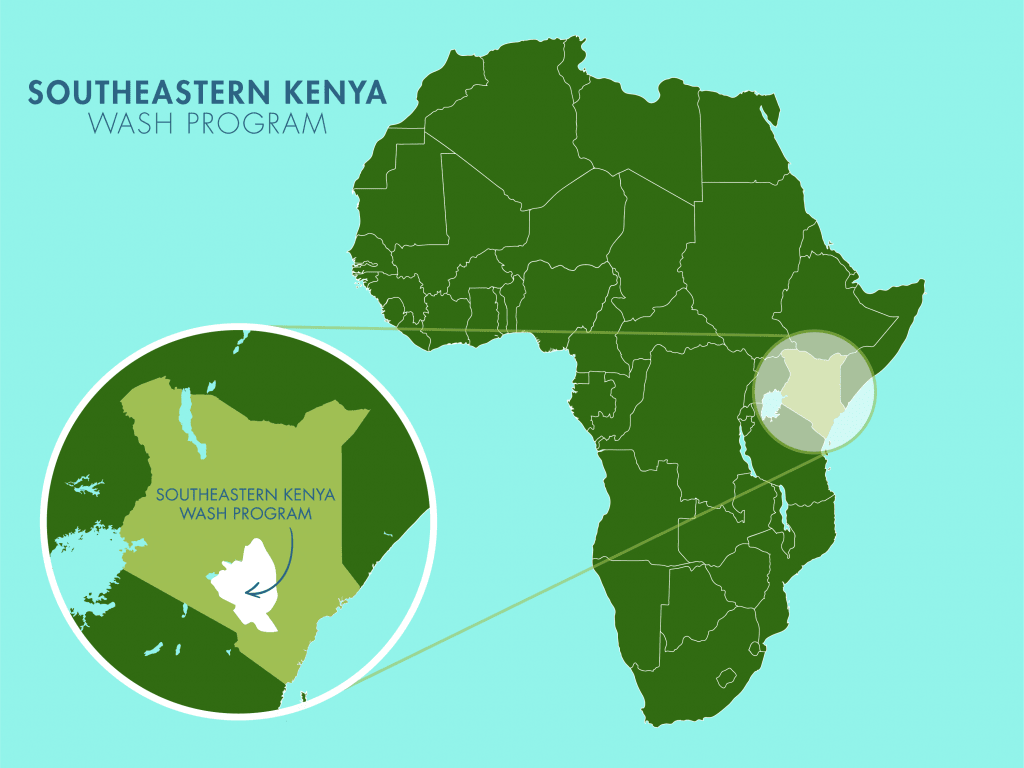
 Protected Dug Well
Protected Dug Well
 Rehabilitation Project
Rehabilitation Project

